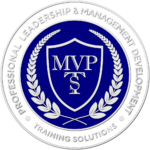Every workplace has its own work culture that the employees need to adapt to. Moreover, adapting to that work culture requires serious attention and collaboration.
The team needs to know how to collaborate with team members in order to work towards the main goal of the company.
In this blog, we will be discovering what teamwork collaboration is and how it can be implemented and improved in the workplace.
What Is Teamwork?
According to Indeed, teamwork is the abilities, qualities, and processes of working well with one or more people to accomplish a common goal.
And, when done right, it can be a truly fulfilling and rewarding experience for all involved. Similarly, it is the foundation of any successful endeavor, be it in the workplace, school, or even in sports.
What Is Collaboration?
Collaboration in the workplace is the act of working together with colleagues, co-workers, and managers towards a common goal or objective. In a workplace setting, collaboration is essential to the success of the organization.
Additionally, it allows individuals to pool their knowledge skills, and resources to achieve better results than they would be able to on their own.
What Is Collaborative Teamwork?
It is the process of working together with a group of people towards a common goal or objective, leveraging each other’s strengths, knowledge, and expertise to achieve a better outcome.
Moreover, it’s a combination of two powerful concepts, collaboration, and teamwork. It involves bringing together individuals together with diverse backgrounds, experiences, and skill sets to work towards a shared goal.
Benefits of Collaborative Teamwork:
Better Problem Solving:
Collaborative teamwork can lead to better problem-solving because team members can bring together their diverse skills, knowledge, and expertise to develop more innovative and effective solutions.
Moreover, this can result in more comprehensive and well-rounded solutions to complex problems.
Improved Communication:
Collaborative teamwork requires effective communication among team members. As team members learn to listen to and understand each other’s perspectives.
They can communicate more effectively and avoid misunderstandings, which will result in smoother team dynamics.
Increased Engagement:
Collaborative teamwork fosters a sense of community and engagement among team members.
Furthermore, when team members feel that their input is valued and they are part of a team working towards a shared goal.
They are more likely to be invested in the project and motivated to achieve success.
How to Implement Collaborative Teamwork?
Establish Clear Goals and Roles:
In order to implement effective collaborative teamwork, it’s important to establish clear goals and roles for each team member. This helps to ensure that everyone is working towards the same objective and understands their responsibilities within the team.
By establishing clear goals and roles, team members are more likely to work together effectively and avoid confusion or misunderstandings.
Foster Open Communication:
Effective communication is a key component of collaborative teamwork. It’s important to create an environment where team members feel comfortable sharing their thoughts and ideas openly, without fear of judgment or criticism.
Moreover, encourage team members to actively listen to each other and to provide feedback in a constructive and supportive manner. This can help to build trust and enhance team dynamics.
Use Technology to Facilitate Collaboration:
In today’s digital age, technology can be a powerful tool for facilitating collaboration. There are many tools and platforms available, such as project management software, instant messaging, and video conferencing, that can help teams work together effectively.
Similarly, these tools can help to streamline communication, track progress, and ensure that everyone is on the same page.
How to Implement It?
Identify areas where collaboration is needed – Start by identifying areas where collaboration can have the biggest impact. This could be in specific projects, departments, or teams.
Develop a plan – Once you’ve identified the areas where collaboration is needed, develop a plan for how to implement it. This plan should include goals, timelines, and key performance indicators.
Communicate the plan – Communicate the plan to all relevant stakeholders, including team members, managers, and other departments. Make sure everyone understands the importance of collaboration and how it will be implemented.
Provide training and support – Provide training and support to team members on how to work collaboratively. This could include training in communication, conflict resolution, and teamwork.
Encourage open communication – Encourage team members to communicate openly and honestly with each other. This includes active listening, providing and receiving feedback, and being respectful of different perspectives.
How to Improve Collaborative Teamwork in the Workplace?
Firstly, it’s important to encourage team-building activities as it can help team members to get to know each other better, build trust, and establish effective working relationships.
Moreover, these activities can be as simple as regular team lunches or more complex team-building exercises.
Secondly, a culture of collaboration starts at the top. Similarly, leaders should model collaboration by encouraging open communication, active listening, and teamwork.
Furthermore, rewarding collaborative behavior can also help to reinforce this culture. Lastly, training and development opportunities can help team members develop the skills and knowledge they need to work together effectively.
Additionally, this can include training in communication, conflict resolution, and teamwork.
